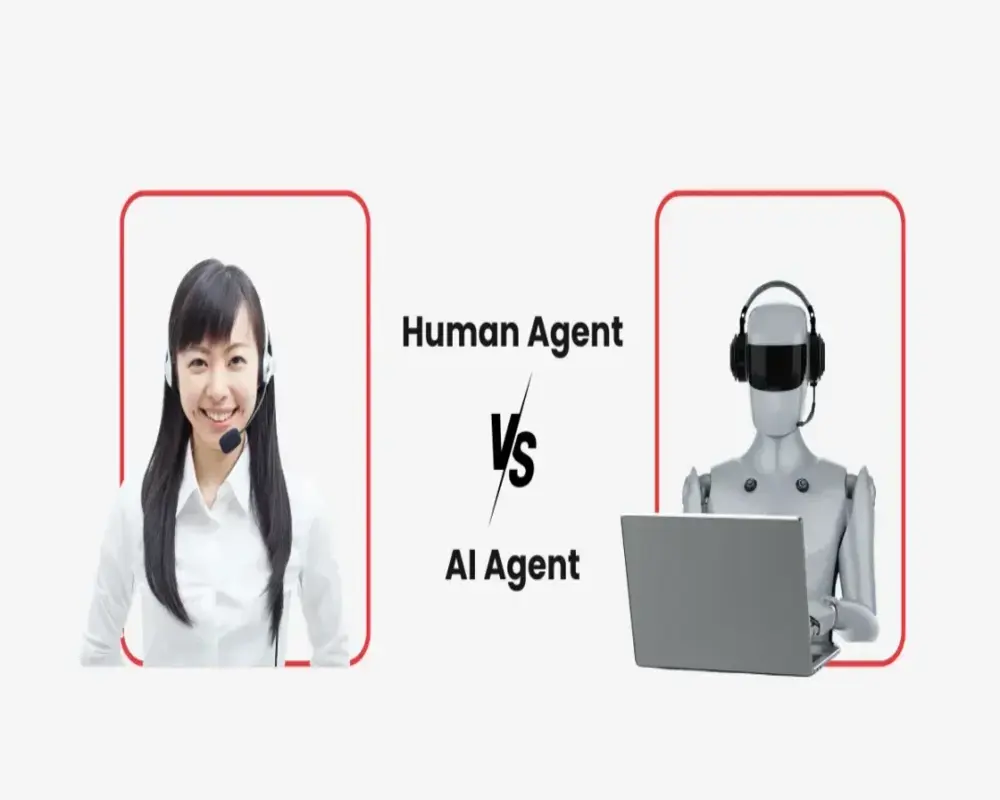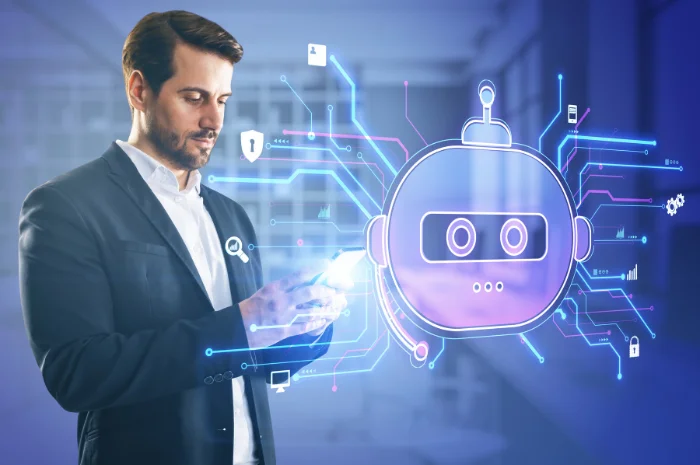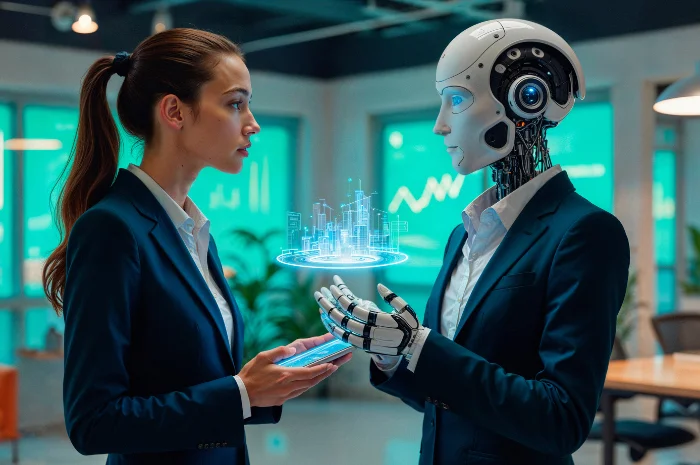AI chatbots promise lightning-fast responses, around-the-clock availability, and data-driven personalization at scale. Human agents, by contrast, bring empathy, nuanced judgment, and creative problem-solving qualities that machines cannot fully replicate.
Let’s unpack that tension of AI chatbots vs human agents. We will explore how AI and humans tackle the quest for instant support, examine the trade-offs lurking beneath the surface, and challenge common assumptions about what “instant” delivers.
Why Speed Matters: The Need for Instant Answers
Where every request is delivered instantly, waiting even a few seconds can feel like an eternity. Every extra moment a customer waits damages their trust in your business and makes them more likely to look elsewhere. These examples explain in a better way:
- Online Shopping: If a web page takes just one more second to load, up to 7% of shoppers may give up and leave their cart behind. Imagine a customer clicking “Help” at checkout and hearing nothing back immediately. They are probably gone for good.
- Healthcare Portals: Patients checking test results or booking urgent appointments are already worried. Even a short wait for support can add stress and lead to more calls, missed appointments, or worse.
Our patience for any delay has all but disappeared because of:
- Quick Questions: We jump online, expecting answers in a flash: “Is my refund ready?” or “Where’s the closest pharmacy?” If the reply is delayed, we move on.
- Same Experience Everywhere: Whether on chat, email or by phone, people want the same fast response. Satisfaction tanks if one channel answers in seconds and another makes you wait.
- Rising Costs: Slow replies don’t just lose sales, they cost more to support. Longer waits mean more contacts, bigger support teams, and higher bills.
Speed isn’t about bragging rights, it affects your sales, customers’ comfort, and team’s workload. But here’s the big question: can anything give people zero-second customer service without cutting corners on accuracy or care?
How AI Chatbots Deliver Instant Support to Customers

Behind the seamless chat window that greets your customers lies a powerful engine of pattern recognition and data-driven responses. AI chatbots achieve “zero-second” service by drawing on vast libraries of past conversations.
When a user asks, “Why didn’t my payment go through?” the bot instantly parses the question, matches it against thousands of similar queries, and delivers the answer it deems most accurate in milliseconds. This speed and consistency make AI chatbots especially valuable for handling high-volume, routine requests that account for the bulk of support traffic.
Since they take no breaks, AI chatbots for customer service can operate 24/7 without additional staffing costs. Once a bot is deployed and trained, each interaction costs only a fraction of a dollar, which is far less than employing a human agent. As long as the bot’s underlying knowledge base remains up to date, every customer receives the same reliable response, eliminating the variability that comes from different agents’ moods or experiences.
However, this efficiency comes with important caveats. Here where they lack:
- Genuine empathy: Bots can mimic friendly language but can’t truly sense frustration or tailor their tone to complex emotional states.
- Complex cases: Unusual or complex issues like a rare billing anomaly, may be outside the bot’s training, leading to generic “I don’t know” responses.
- Ongoing maintenance burden: Without regular updates and retraining, a chatbot’s answers grow stale as your products, policies, and customer concerns evolve.
How Human Customer Service Agents Provide Depth and Empathy

When customers contact a live support agent, they tap into a reservoir of judgment, creativity, and genuine understanding. These are some qualities that, to date, no automated system can truly replicate. Human agents listen for unspoken cues in tone and word choice, ask clarifying questions to uncover hidden details, and adapt their responses on the fly.
Skilled customer service agents don’t just recite a checklist; they draw on experience to tailor solutions. They might notice that a customer’s language suggests urgency (“I need this fixed before tomorrow morning”), prompting them to expedite escalation. They can offer goodwill gestures such as discounts, one-time exceptions, and personalized follow-ups reinforcing the brand’s commitment to customer care. And when policies aren’t black-and-white, agents exercise judgment, balancing company guidelines with empathy to reach fair outcomes.
Yet these human strengths come with trade-offs:
- Higher per-interaction cost: Training, salaries, benefits, and management overhead all add up, making each human-handled ticket substantially more expensive than a bot response.
- Limited availability: Agents need breaks, shifts, and sleep, meaning you must staff around the clock if you want true 24/7 coverage, which further raises expenses.
- Variability in service quality: Even well-trained agents can have off days. Their tone, patience, or accuracy may fluctuate, leading to inconsistent customer experiences.
Human customer service agents bring the heart to customer service, handling the unexpected with care and creativity. However, in striving for zero-second response times, organizations must weigh these benefits against the realities of cost, staffing, and consistency.
Which is Better: AI Chatbots vs Human Agents?
If you are exploring customer service chatbots weighing the idea of replacing or heavily reducing your human support team in pursuit of “zero-second” service, this comparison is your reality check:

Designing and Launching Your Zero-Second Customer Service Program
Delivering zero-second customer service with AI isn’t just about plugging in a chatbot, it’s about crafting a thoughtful, evolving system that understands when automation helps and when it hurts. The goal isn’t speed at all costs but with context, care, and continuity. Here’s a practical roadmap for building a hybrid zero-second customer service model that combines the strengths of AI and human agents.
1.Map What Customers Really Ask For
Start by identifying the most common customer requests across channels. This gives you a foundation to decide which interactions should be automated and which still require a human touch. You can group customer intents into three broad categories:
- Bot-Solo: Tasks like order tracking, password resets, and appointment bookings.
- Human-Only: Billing disputes, complaints, emotionally charged queries.
- Hybrid: Product suggestions, policy clarifications, anything needing speed and nuance.
This mapping ensures you are not just deploying bots where it’s convenient but where they make sense.
2. Launch Smart with a Focused Pilot
Rather than going live across every touchpoint, start with a controlled environment, website’s live chat or app support. Run a 4–6 week pilot, and define clear metrics to track:
- Resolution rate: How often does the bot solve issues end-to-end?
- Escalation rate: How often it passes conversations to a human.
- Customer satisfaction (CSAT): How users rate their experience post-interaction.
Use this pilot to learn what your bot handles well and where it stumbles.
3. Build a Seamless Bot-to-Human Handoff
Even the smartest bots for customer service have limits. When escalation is needed, the transition should feel smooth and respectful of the customer’s time. A seamless handoff should:
- Inform the user that a human is joining.
- Transfer the chat history and customer context.
- Prevent the customer from repeating themselves.
If done right, even escalated conversations still feel like “zero-second” service because there’s no friction in moving from AI to a person.
4. Learn Fast: Human Feedback as Training Fuel
Your human agents aren’t just backup, they are also your best QA team. Create a regular cadence (weekly or biweekly) where they:
- Flag bad bot responses.
- Identify missing intents or new trends.
- Suggest script changes or better phrasing.
5. Measure What Matters, Not Just What’s Fast
Speed alone doesn’t define a successful support experience. Make sure your evaluation includes:
- Repeat contact rate: Are users coming back with the same issue?
- Time-to-resolution across channels: Not just first replies, but full issue closure.
- Agent workload and satisfaction: Are escalations manageable or overwhelming?
Conclusion
Zero-second service isn’t just a race to reply faster. When done right, it’s a strategy that can redefine your relationship with customers. Like any meaningful relationship, it requires balance, attention, and a deep understanding of what people really need, not just what technology can provide.
The future isn’t bots or humans. It’s bots and humans working together to deliver instant, intelligent, and emotionally resonant service.
FAQs
Can AI chatbots replace human customer support?
Chatbots can handle basic queries and tasks, improving response time and efficiency. However, they can’t fully replace human support, especially for complex or emotional issues. The best customer service blends chatbots and human agents for a seamless experience.
What is the difference between an AI chatbot and a live agent?
A chatbot is an automated tool that provides instant answers to routine questions. A live agent is a human who offers personalized, empathetic support for complex issues. Chatbots handle speed and scale, while agents handle depth and nuance.
How does AI customer service differ from human support?
AI customer service uses chatbots and automation to deliver quick, 24/7 responses for common issues. Human support offers empathy, context understanding, and complex problem-solving. AI boosts speed and efficiency, while humans provide emotional intelligence and personalized care.



